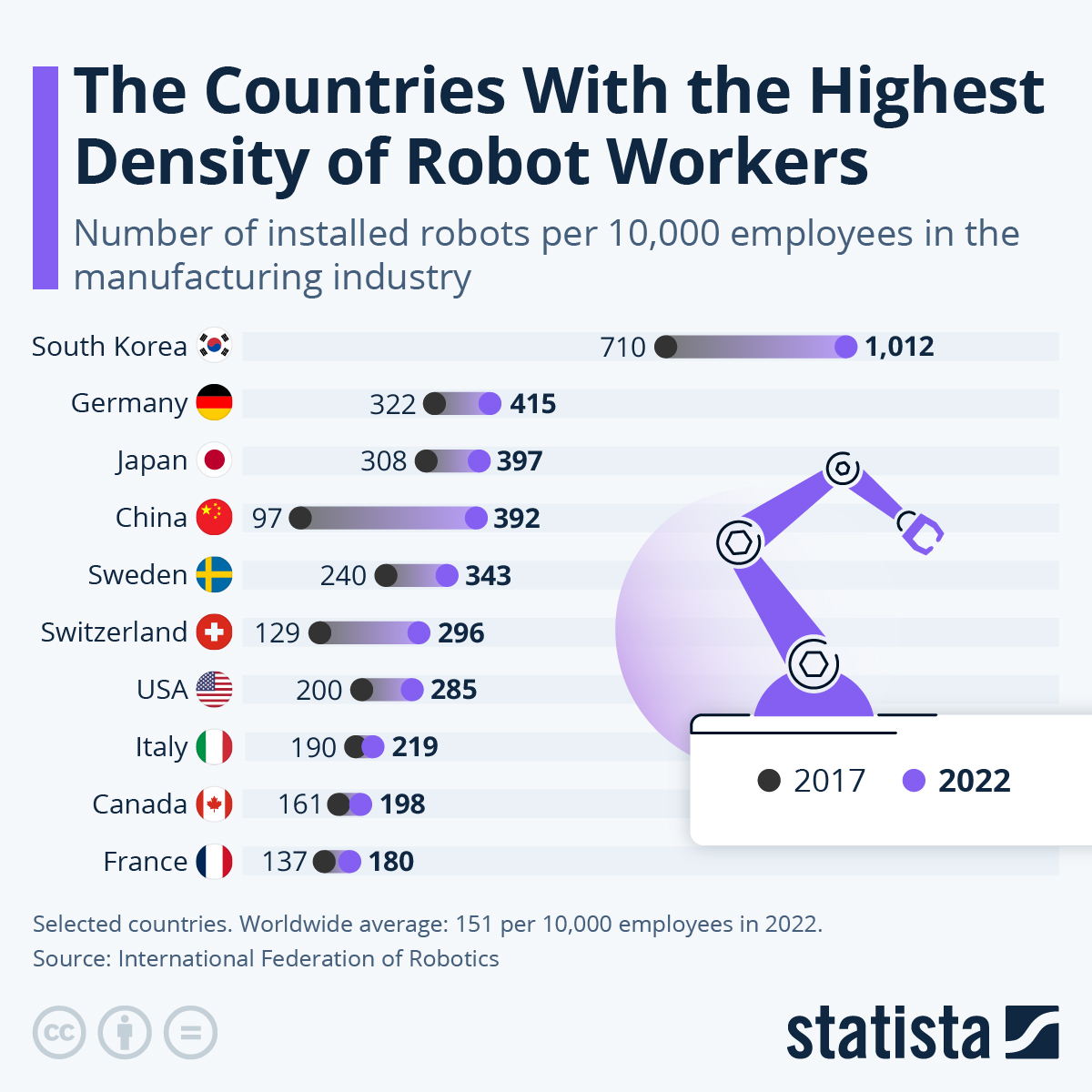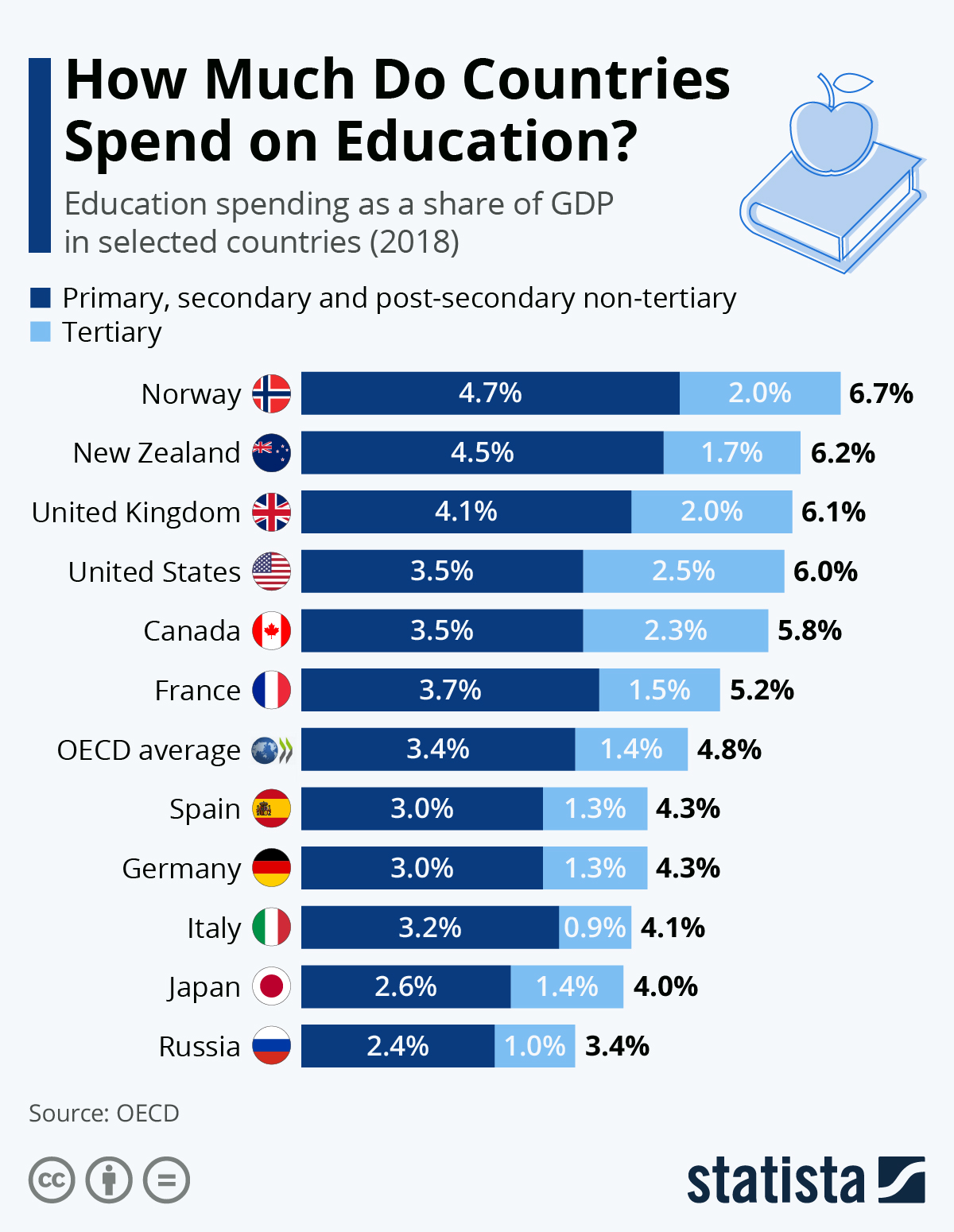ROBOT WORKERS
The Countries With The Highest Density Of Robot Workers

DESCRIPTION
This chart shows installed industrial robots per 10,000 employees in the manufacturing industry (2019).
Topics: Οργανωσιακή Θεωρία και Συμπεριφορά (Organizational Behavior), Επιχειρηματικότητα (Entrepreneurship), Εταιρική Κοινωνική Ευθύνη (Corporate Social Responsibility), Strategic Management, Leadership , Organizational Culture and Change
ROBOT WORKERS

This chart shows installed industrial robots per 10,000 employees in the manufacturing industry (2019).
9o Διεθνές Συνέδριο ICSIMAT
Στρατηγικό Καινοτόμο Μάρκετινγκ και Τουρισμός σε περίοδο Covid-19
9o Διεθνές Συνέδριο ICSIMAT
To 9ο διεθνές Συνέδριο Στρατηγικού Καινοτόμου Μάρκετινγκ και Τουρισμού (ICSIMAT 2020) διοργανώνεται διαδικτυακά από το Πανεπιστήμιο Δυτικής Αττικής με επιστημονική υπεύθυνη την καθηγήτρια κα Κάβουρα Ανδρονίκη από το Τμήμα Διοίκησης Επιχειρήσεων. Στο πλαίσιο του εν λόγω συνεδρίου, το οποίο υποστηρίζεται από περισσότερα από 50 πανεπιστήμια από όλον τον κόσμο, παρουσιάζονται σημαντικές ερευνητικές εργασίες από τον χώρο του τουρισμού, του μάρκετινγκ, του μάνατζμεντ, της επικοινωνίας και των νέων τεχνολογιών σχετιζόμενες με COVID-19 δημοσιεύσεις.
Η πρωτοτυπία του συνεδρίου έγγυται στο πάντρεμα της ακαδημαϊκής και επιχειρηματικής δράσης το οποίο αποτελεί καινοτομία για τα ελληνικά δεδομένα ενώ αποτελεί την σύγχρονη τάση διεθνώς.
Live Stream
26-28 Σεπτέμβρη 2020 / 16.00μμ-19.00μμ
https://justcapital.com/news/chart-of-the-climate-week-low-carbon-intensity-is-correlated-with-higher-returns/

While this picture is certainly encouraging, more needs to be done: Scope 1 and 2 GHG emissions tend to be a smaller part of overall GHG emissions for many companies (scope 3 emissions typically comprise a larger part). However, disclosure and reporting for these value chain emissions is still lacking, even though there are a few notable pledges from companies, like BP, that include them. Companies should use the opportunity that climate week represents to consider extending their engagement on limiting their carbon emissions across their whole value chain. As our research shows, there don’t have to be negative impacts on their valuation – in contrast, with the risk of carbon taxation looming, proactive reduction might prove to be beneficial in the long run.
http://www3.weforum.org/docs/WEF_IBC_Measuring_Stakeholder_Capitalism_Report_2020.pdf
How WEF and Climate Week Are Showing the Way Forward for Stakeholder Capitalism
|
|
24 Industries & Technologies That Will Shape The Post-Virus World
|
|
https://www.mckinsey.com/featured-insights/corporate-purpose/from-there-to-here-50-years-of-thinking-on-the-social-responsibility-of-business?cid=other-eml-alt-mip-mck&hlkid=67a9b344939b483393e9a620f9221aee&hctky=11703013&hdpid=80e1385d-2ce3-493f-88a5-ee124a8b8058
When it comes to education, there are not only big differences in attainment levels across the world, but also the amount of a country's resources which are spent on investment in the sector. According to the OECD's latest report, Norway is one of the countries which spends the largest share of its GDP on education, at 6.6 percent when also accounting for tertiary. At the other end of the scale of analyzed countries, Russia spends only 3.4 percent.


|
|
Τhey say the British restaurant scene is uninspired. But the British restaurant subsidy scene? Highly innovative.
On Monday, the UK wrapped up a first-of-its-kind “Eat Out to Help Out” policy, which incentivized diners to eat out at restaurants bulldozed by the pandemic.
How? By taking a page from Applebee’s. For the month of August, the UK government paid 50% of the bill (up to $13 per person) for people to eat out on Mondays, Tuesdays, and Wednesdays. Alcohol was not included.
Economists are right about one thing: people do respond to financial incentives.
Zoom out: Some industry boosters say success is more than just numbers, it’s about mindset. The incentive lured people out of their homes and got them to start participating in the economy again. Almost 40% of people who used the subsidy said it was the first time they ate out since restaurants reopened, according to a hospitality trade group.
But this story is a lot like a restaurant meal—the bill always arrives at the end. Business Insider crunched the numbers and determined that the incentive cost the government $567 million over the course of the month.
Looking ahead...restaurants still face impending doom from cold weather, deferred rent payments, and capacity limits. But many found the “Eat Out to Help Out” scheme so valuable that they’re going to continue the discount on their own dime.